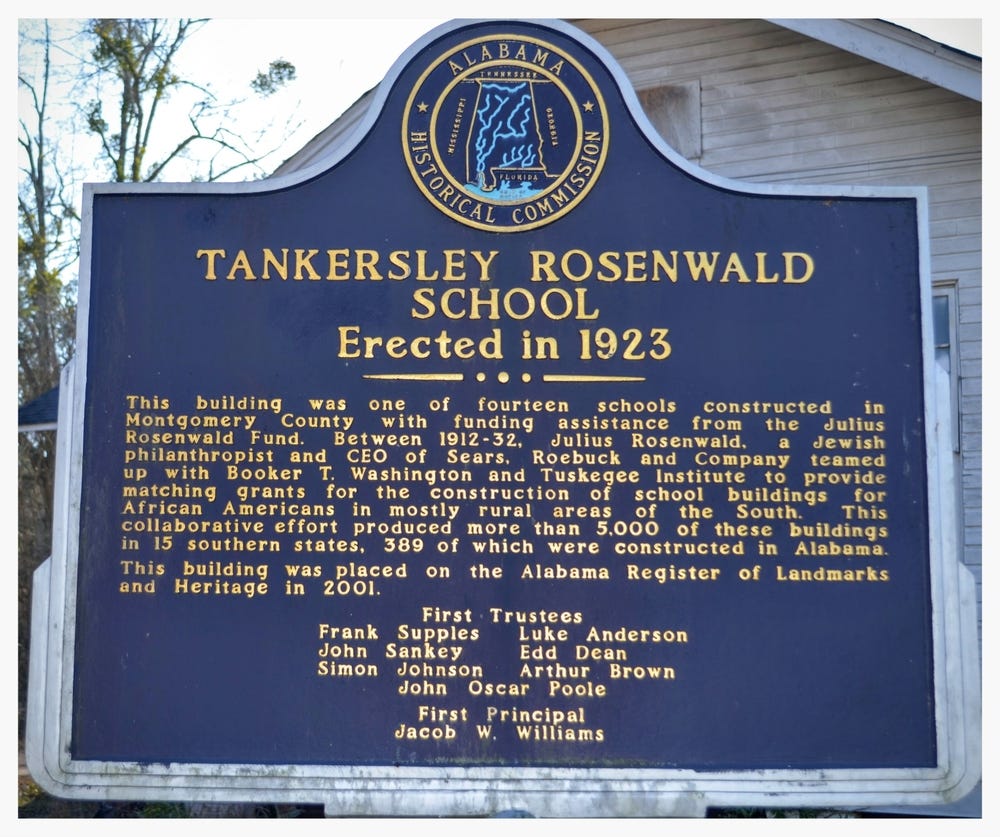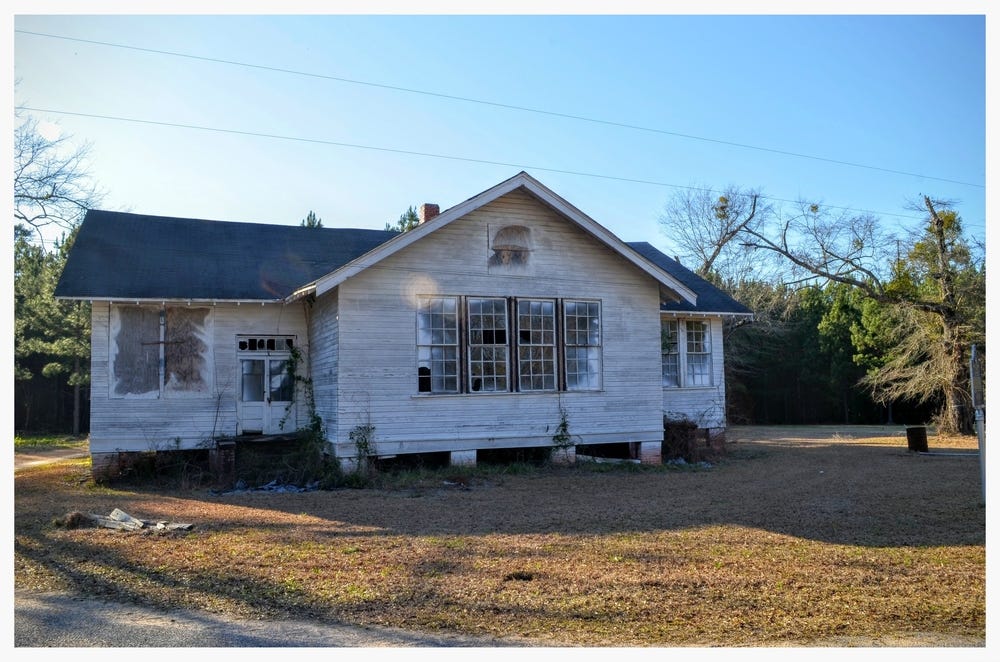Tankersley Rosenwald School
Julius Rosenwald was born in Springfield, Illinois in 1862 to German Jewish immigrants. When he was 16 he moved to New York City to apprentice under his uncles in their clothing business. He eventually started a clothing manufacturing company with his brother, but it went bankrupt in 1885 and the Rosenwald brothers decided to start over closer to home in Chicago. They started their new company, Rosenwald & Weil Clothiers, with their cousin. In 1893 Rosenwald & Weil became the chief clothing supplier for Sears, Roebuck & Company, and by 1903 Julius Rosenwald owned half of Sears. In 1908 Rosenwald became president of the company, and during several corporate re-organizations Rosenwald became acquainted with the banker Paul J. Sachs. Sachs in turn introduced Rosenwald to Booker T. Washington.
Washington is one of the greatest Alabamians in history, and we'll cover him in finer detail in many future posts, but for now we'll look at the basics. Washington was born a slave in Virginia in 1856. As a young adult he worked in the salt furnaces and coal mines of West Virginia to save money to attend Hampton Institute back in Virginia. After graduating and working at Hampton as a teacher, Washington was chosen to be the founding principal of the new Tuskegee Institute in Alabama. Tuskegee opened in 1881, and Washington started his career as one of the preeminent African-American educators in the nation. Washington quickly realized that there were wealthy industrialists from outside of the South who might be inclined to offer financial support to the cause of African-American education.
Soon after Rosenwald and Washington's first meeting, they partnered to build six small schools in rural Alabama to be operated by graduates of Tuskegee. In 1917 the Rosenwald Fund was established by the family to further "the well-being of all mankind", and the so-called "Rosenwald Schools" soon became one of the funds crowning achievements. The Rosenwald School program provided funding to build new schools to educate rural African-American children throughout the South, but it centered on matching funding from the local community and a pledge from the local school board to administer the school once construction was complete. Students and scholars at Tuskegee developed architectural plans that were optimized for conditions in the rural South (such as weather and the lack of electricity), and in thirty years over 5,000 schools were built in fifteen states.
The Tankersley School was built in 1923 as one of fourteen Rosenwald Schools in Montgomery County. It was added to the Alabama Register of Landmarks & Heritage in 2003.
“Tankersley Rosenwald School
Erected in 1923
This building was one of fourteen schools constructed in Montgomery County with funding assistance from the Julius Rosenwald Fund. Between 1912-1932, Julius Rosenwald, a Jewish philanthropist and CEO of Sears, Roebuck and Company teamed up with Booker T. Washington and Tuskegee Institute to provide matching grants for the construction of school buildings for African Americans in mostly rural areas of the South. This collaborative effort produced more than 5,000 of these buildings in 15 southern states, 289 of which were constructed in Alabama. This building was placed on the Alabama Register of Landmarks and Heritage in 2001.
First Trustees - Frank Supples, Luke Anderson, John Sankey, Edd Dean, Simon Johnson, Arthur Brown, John Oscar Poole
First Principal - Jacob W. Williams”






